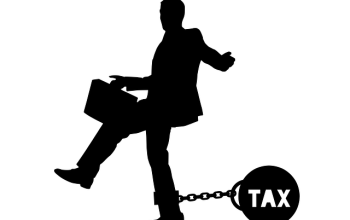Effective tax optimization stands as a cornerstone in the pursuit of financial well-being for both individuals and businesses. Entrepreneurs, with their unique financial landscapes, can significantly benefit from tailored strategies that unlock tax benefits for entrepreneurs, particularly through prudent year-end tax planning and adept maximization of deductions. This article delves into these advanced tactics, guiding readers through the intricacies of tax-deferred investments and the nuances of retirement tax planning, all designed to harness tax minimization techniques for enhanced wealth preservation. By understanding and applying these principles, entrepreneurs can safeguard their financial health and ensure compliance, positioning themselves for sustainable success.
- Optimizing Tax Benefits for Entrepreneurs: Strategies for Year-End Tax Planning and Maximizing Deductions
- Mastering Tax-Deferred Investments: A Roadmap for Entrepreneurs to Enhance Wealth Preservation
- Retirement Tax Planning: Leveraging Minimization Techniques for Financial Security and Compliance
Optimizing Tax Benefits for Entrepreneurs: Strategies for Year-End Tax Planning and Maximizing Deductions

For entrepreneurs, optimizing tax benefits is a strategic endeavor that can significantly enhance financial health. Year-end tax planning emerges as a pivotal opportunity to minimize tax liabilities and amplify retained earnings. By meticulously reviewing business transactions and accounting for changes in tax laws, entrepreneurs can identify deductions and credits that are often overlooked. Strategic decisions around inventory valuation, capital expenditures, and the timing of income and expenses can lead to substantial savings.
Maximizing tax deductions goes beyond mere compliance; it involves a proactive approach to tax-deferred investments and retirement tax planning. Entrepreneurs who wield these techniques effectively can defer taxes on current income, allowing those funds to compound over time. By leveraging tax-advantaged accounts for retirement savings, they can not only secure their financial future but also reduce the current year’s taxable income. Tax minimization techniques, such as reevaluating the business structure or utilizing Section 179 deductions for equipment purchases, can further streamline tax obligations. This comprehensive strategy not only optimizes current tax benefits but also lays a solid foundation for sustained wealth preservation in the future.
Mastering Tax-Deferred Investments: A Roadmap for Entrepreneurs to Enhance Wealth Preservation

Entrepreneurs who skillfully navigate tax-deferred investments can significantly enhance their wealth preservation efforts. These investments, which allow for the growth of funds within a tax-sheltered environment, offer a compelling opportunity for entrepreneurs to defer income taxes on earnings until a later date when they may be in a lower tax bracket or upon withdrawal. A prudent year-end tax planning strategy is crucial for entrepreneurs to take full advantage of these vehicles. By carefully timing contributions and distributions, entrepreneurs can maximize their tax benefits for the current year while setting the stage for favorable tax treatment in the future. This approach not only defer’s taxes but also compound’s investment growth over time, leading to potentially greater wealth accumulation.
Furthermore, retirement tax planning is a critical component of tax minimization techniques for entrepreneurs. Establishing and contributing to tax-deferred accounts such as Individual Retirement Accounts (IRAs) or Self-Employed 401(k) plans can substantially reduce taxable income during the entrepreneur’s peak earning years. By making proactive decisions regarding investment types, allocation of resources, and the timing of these contributions, entrepreneurs can optimize their after-tax returns. Additionally, understanding and leveraging the specific rules and benefits associated with each tax-deferred investment vehicle is essential for maximizing deductions and minimizing taxes, ensuring that entrepreneurial endeavors not only prosper in business but also in financial foresight.
Retirement Tax Planning: Leveraging Minimization Techniques for Financial Security and Compliance

For entrepreneurs, retirement tax planning is a pivotal component in ensuring financial security and compliance with tax laws. Utilizing minimization techniques tailored to their unique financial situation can yield significant tax benefits. By carefully timing the realization of income and the deduction of expenses, entrepreneurs can optimize their cash flow and reduce their overall tax burden. Year-end tax planning is particularly crucial, as it allows for a strategic assessment of business activities throughout the year and identification of opportunities to maximize tax deductions. This proactive approach ensures that business owners take full advantage of legitimate tax-deferred investments, such as SEP IRAs or solo 401(k)s, which can provide substantial savings in both current and future tax years. By implementing these strategies, entrepreneurs not only enhance their retirement nest egg but also demonstrate a commitment to compliance, aligning with regulatory requirements while effectively managing their financial health.
In the realm of retirement tax planning, the application of minimization techniques is not a one-size-fits-all endeavor. It requires a deep understanding of the individual’s or business’s specific circumstances, including income levels, investment choices, and future financial goals. Tax-deferred investments serve as a cornerstone in this strategy, enabling entrepreneurs to defer taxes on earnings until a later date when they might be in a lower tax bracket. This strategic deferral can lead to significant savings over time. Moreover, staying abreast of changes in tax laws and utilizing allowable deductions and credits can further augment the effectiveness of one’s retirement planning. By adopting a disciplined approach and consistently reviewing their financial situation, entrepreneurs can navigate the complexities of tax minimization techniques with confidence, ensuring that they not only comply with current regulations but also safeguard their financial well-being for years to come.
In conclusion, proactive tax planning stands out as a cornerstone in the financial prudence of both individuals and businesses. Entrepreneurs, in particular, can greatly benefit from understanding and utilizing tax benefits for entrepreneurs, which are detailed in the article’s first section. Year-end tax planning is a critical activity that when executed effectively, such as through maximizing tax deductions, can significantly enhance the financial health of small businesses. Furthermore, exploring tax-deferred investments offers a strategic avenue to preserve wealth over time. Lastly, retirement tax planning with a focus on tax minimization techniques ensures long-term financial security and compliance. By integrating these tax optimization strategies, one can navigate the complexities of tax laws to their advantage, ultimately safeguarding their financial future.



